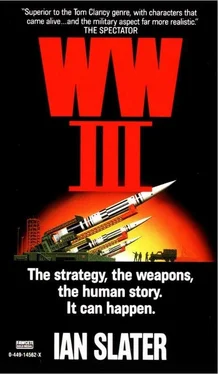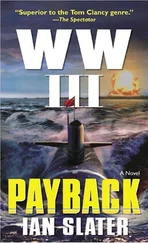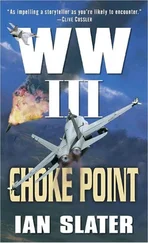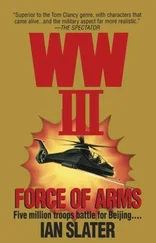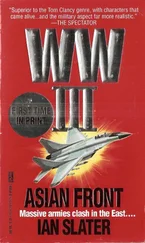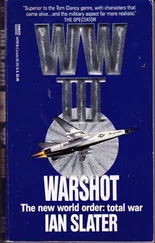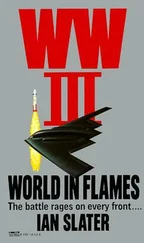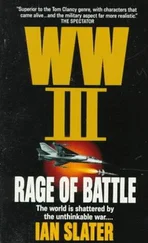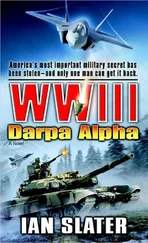“Report from NATO?” asked Mayne.
“No unusual movement,” reported General Gray. “My hunch is that Moscow’s as worried about this as we are, Mr. President.”
“I think you’re right, General, but I don’t want any trigger-happy private pulling the trigger. Anyway, to be on the safe side, I’ve put a call through to Suzlov.”
Admiral Horton’s bushy eyebrows lifted. “I wouldn’t trust Suzlov as far as I could kick him. Their fleet’s already off Manchuria. I don’t believe that ‘maneuvers’ line they’re giving us for a moment. There’s a lot of traffic in and out of Cam Rahn Bay.”
“They advised us of that, Admiral,” Mayne pointed out.
“Trojan horse,” the admiral responded. “Probably carrying enough troops aboard that battle group to reinforce Pyongyang. Three or four hours, they could be unloading at Wonsan.” He could see the president didn’t know where it was. He moved the pointer up along the east coast of North Korea. “Only sixty miles from the DMZ. They come down that coast road, we’ll have another front we have to contend with.”
“If they turn up at Wonsan,” said Mayne, “we’ll ask them to stop.”
Sometimes the admiral simply despaired. If the president’s advisers had kept their boss half as well informed about naval matters as they did the latest Gallup polls, the whole country would be better off. The entire Soviet order of battle was clearly evident in the satellite, and he reminded the president of this. “There’s everything in there from the nine-thousand-ton Mike subs to the Alfa and Yankee classes as well. And—”
“Then if we can see them, Admiral, the Russians must want us to know where they are. Doesn’t that tell you something? Our satellite photos tell us they’re only proceeding at five to ten knots, Admiral. Hardly battle speed, is it?”
“I haven’t been advised of this.”
“We got the call before you arrived,” interjected Trainor. “From NSA.” The admiral was embarrassed, and Trainor could see there was going to be some ass kicking in Naval Intelligence when the admiral got back to the Pentagon. Then suddenly the embarrassment vanished from the admiral’s face as he cast a cold, professional eye over the chart, surveying not only Korea but the entire northeast Asian operational area, from Japan to the China Sea. He quickly calculated the Soviet Fleet’s position. Why had they slowed? Surely this would upset their amphibious maneuvers timetable, a highly complex combined-services operation that had slim time margins at the best of times. “My God,” he said, turning to the president. “That places them on the thirty-ninth parallel, one thirty-one longitude. Off Wonsan.” Mayne looked across at General Gray. “Order the reinforcements en route from Japan to disembark at Pusan as quickly as possible.”
“Yes, sir.”
“Rescue boats all out, sir. Three returning.”
“Very well,” answered the skipper of the USS frigate Des Moines, binoculars steadied against the flying bridge stanchion, watching through the haze as the two LAMP helos dropped vermilion marker flares about the Beaufort rafts now two miles or so from the Blaine. The crippled frigate was listing hard to starboard, white smoke still pouring from her. Now and then a crimson streak of fire could be seen erupting from deep inside her.
The skipper of the Des Moines had to make the decision whether or not to use the choppers as additional rescue vehicles or to release them to complement his radar as part of his protective screen. All about him he could hear radio chatter between the Des Moines rescue boats, including the ship-to-shore launch.
“Helos to resume screen,” he ordered. For the price of a few more men lost to exposure in the oil-slicked sea, the young skipper decided he would prefer to use the choppers as airborne eyes. Something had gone drastically wrong aboard his sister ship, the Blaine, and until he knew why, he’d rather be reprimanded for overcaution — protecting his ship — than have to explain to a naval board of inquiry, as Brentwood would have to if he pulled through, how it was that his men had abandoned the multimillion-dollar ship when she was still afloat. And though it was sheer chance, it wasn’t going to do Ray Brentwood, badly wounded as he was, any good to have to explain how it was that he and his second officer were the first to be pulled out of the chuck by the Des Moines. Already there’d been strict orders that upon return to port, there was to be no comment made to anyone until Admiral Horton, chief of naval operations, had directed otherwise.
Most of the men picked up were already dead, drowned, despite their life jackets, by the oil breathed in, some asphyxiated by the lack of oxygen in the oil slick fires that were still burning around the smoking ship.
“Sonar contact. Range three thousand yards.”
“Bearing?” asked the skipper.
“Zero fiveniner.”
“Hard right rudder,” instructed the skipper. He flicked onto the CIC channel, pushing the “squelch” button, drowning out the rescue craft traffic.
“What have we got, Tom?”
From the CIC below the bridge there was a pause, the computer racing through engine signature matchup.
“No match.” Which meant it might be hostile but was definitely not friendly. The young skipper was thinking fast; the signal was increasing, its echo louder. “It should be closing,” said the skipper to the electronics warfare officer down in the CIC. “How about passive mode? Any noise from it?”
“Negative.”
“Very well. Torpedoes ready?”
“Ready.”
“Standby to fire.”
“Stand by to fire.”
“Lookouts sharp!”
The starboard lookout shouted an alarm, but it turned out to be one of the white igloo-shaped Beauforts, bobbing up and down.
“Contact fading,” reported the radar operator. It was an awful decision — the damned thing was thirty fathoms below the surface. A new sub with no known signature waiting? The computers weren’t sure, absorbing a lot of clutter from the dozen or so small rescue boats and clutter from the sewn-in metal reflectors on the Beauforts.
“Size?” asked the skipper.
“Can’t say,” reported the EWO. “Echo returns, but it’s fuzzy.”
The skipper decided he couldn’t take a chance.
“Range?”
“Twelve hundred yards.”
“Bearing?”
“Zero six three.”
“Stand by to fire one and four.”
“Ready to fire one and four.”
“Bearing?”
“Zero six three. Holding steady.”
“Range?”
“Eleven hundred yards and closing.”
“Fire one and four.”
Two MK-48s, the most sophisticated torpedoes yet made, were running through the chop in excess of sixty feet a second, diving, homing in on the target.
“Contact fading.”
“He’s hightailing,” came a voice in the background, but the target wasn’t running; it was the angle of the ship turning that only made it seem that way.
Two miles ahead, the sea rose out of itself, shattered white and brown-speckled, the whoomp of the second torpedo quickly following the first — the sound of both reaching the frigate seconds later. The brown spots in the white mushroom were Beaufort life rafts, tumbling down into the vortex of the collapsing column, its bubbling base dirty with oil, bodies, and pieces of metal, possibly from the Blaine as well as from the target blown skyward, several of the Blaine’s crew spilling out of the falling Beauforts, disappearing along with the glints of metal.
The contact vanished from the screen, the skipper not knowing whether he’d sunk an NKA diesel sub, though this surely would have made more noise, or whether what he had torpedoed was a hunk of metal having sunk and been suspended in the heavier salinity layers and for which he had killed over forty more of the Blaine’s already shipwrecked crew, those close to the explosions of the torpedoes having their spines and necks snapped by the concussion.
Читать дальше
